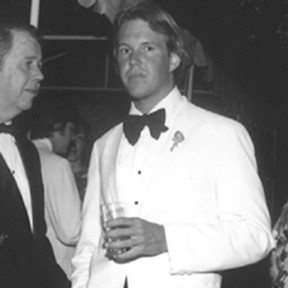
Making different strokes
The Pollock Gallery, located in the Hughes-Trigg Student Centeropened the 2003-2004 exhibition season with 13 rarely seenpaintings by SMU’s own Charley Aberg. The exhibit runs fromAug. 25 through Oct. 4, 2003. The show brings together works fromthe artist’s final body of works which have never before beenshown publicly. The show is curated by Philip Van Keuren, directorof the Pollock Gallery and assistant professor of Art andCuratorial Studies at the Meadows School of the Arts.
Having studied painting at the University of Texas, Austin, andthe New York Studio School, Aberg received his bachelor of finearts degree from SMU in 1970 and his master’s degree in finearts from the San Francisco Art Institute in 1973. After showing inone-person and group exhibitions in and around San Francisco, hereturned to his hometown of Dallas where the lively, undulatingfigural contours of his inked aluminum cut-outs quickly drew theattention of critics and patrons alike. By 1980, Aberg had had twosolo exhibitions in Dallas, and had participated in a group show atthe Robert Miller Gallery in New York. Despite this success, Abergabandoned his familiar figural cut-outs in 1980 and began to delveinto an abstract and expressionistic style soon after seeing thePicasso retrospective at the Museum of Modern Art in New York.
The “White Paintings” at the Pollock Galleryrepresent the fruition of Abergs search for a more expressive modeof artistic communication. Layers of geometricized shapes –some representative of figures, most not – fill the largecanvases with suggestions of spatial depth, yet the artistcontinually undercuts this sense of depth. Streaks of dripped paintand fingers dragged through the wet medium have left permanentreminders that what is seen is not illusionistic space, but rathershape and color – painting at its most basic, and perhapsmost honest, level. The white hues which unite these works act asan anchor in each work. Opposed to its own black outlines, whitebecomes a striking contrast to all other colors and is thefundamental element with which all other hues must contend. Thepleasing harmonies and surprising tensions which revolve around the”whiteness” of these paintings may have theirbeginnings in the artist’s earlier works, but the coloristicsensitivity in the final body of work herald a new and existingdirection in a career cut much too short by the artist’sdeath in 1982.
The Pollock Gallery is open Monday, Tuesday, Thursday, andFriday from 11 a.m. to 5 p.m., and Saturday from 1p.m. to 5 p.m. Closed Wednesdays and Sundays except by appointment. For moreinformation call (214) 768-4439.








